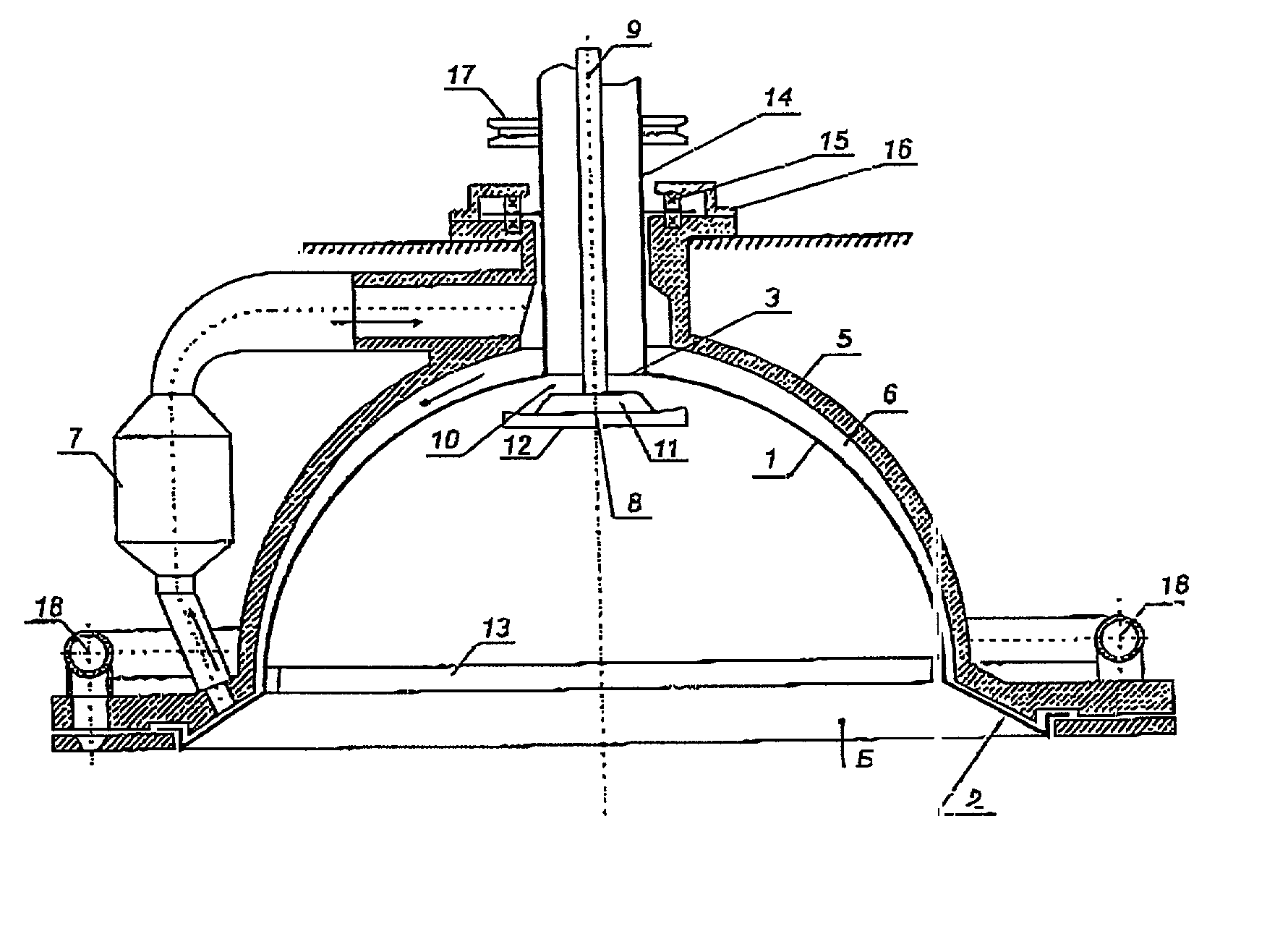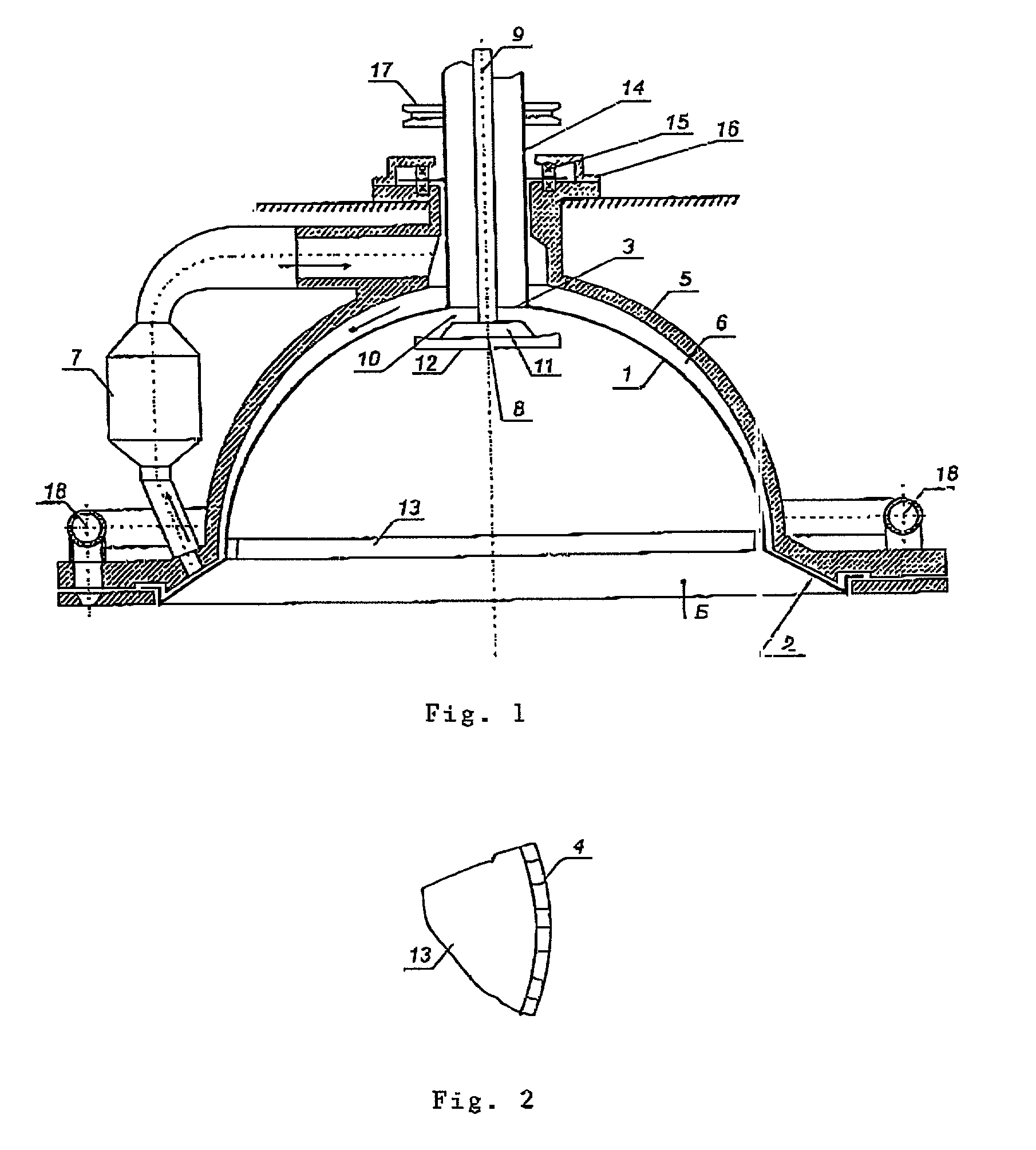Device for forming synthetic fiber materials
a technology of synthetic fibers and materials, applied in the field of synthetic fiber materials, can solve the problems of reducing the effectiveness of the manufacturing process, increasing the difficulty of further transportation through the melt line, and reducing the so as to reduce the quantity of heat energy required for heating the inner space, the distribution effect of the distributor plate is further improved, and the inner volume is reduced.
- Summary
- Abstract
- Description
- Claims
- Application Information
AI Technical Summary
Benefits of technology
Problems solved by technology
Method used
Image
Examples
Embodiment Construction
[0022] The device shown in the drawing serves to producer fibers from a thermoplastic melt and comprises a vertically installed rotating hollow reactor 1 in the form of a paraboloid, which is created by rotating a parabola around its own axis. Provided on the open rim of the paraboloid is a rim 2 that widens to form a cone. Centrally positioned in the curved portion of the paraboloid is an opening 3 for introducing a polymer melt. The inner wall of the hollow reactor 1 is provided with flat ribs 4, which run vertical to the rim 2 on the lower area of the hollow reactor 1.
[0023] The hollow reactor 1 is located in a container 5 that encloses it and whose surface accommodates the shape of the hollow reactor 1 in such a way as to produce a curved gap 6. The upper part of the gap 6 is connected to the outlet and the lower part of the gap 6 to the intake of a steam generator 7, with the result that a closed steam circuit is formed by the gap 6. The direction of movement of the water vapor...
PUM
| Property | Measurement | Unit |
|---|---|---|
| distance | aaaaa | aaaaa |
| outer diameter | aaaaa | aaaaa |
| diameter | aaaaa | aaaaa |
Abstract
Description
Claims
Application Information
 Login to View More
Login to View More - R&D
- Intellectual Property
- Life Sciences
- Materials
- Tech Scout
- Unparalleled Data Quality
- Higher Quality Content
- 60% Fewer Hallucinations
Browse by: Latest US Patents, China's latest patents, Technical Efficacy Thesaurus, Application Domain, Technology Topic, Popular Technical Reports.
© 2025 PatSnap. All rights reserved.Legal|Privacy policy|Modern Slavery Act Transparency Statement|Sitemap|About US| Contact US: help@patsnap.com


